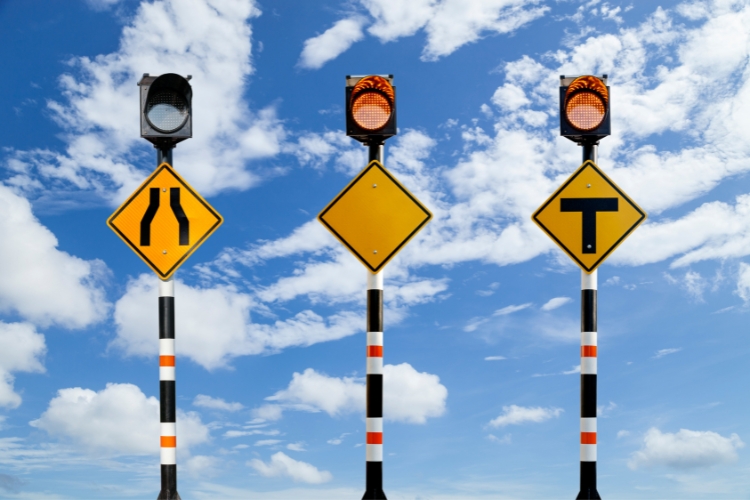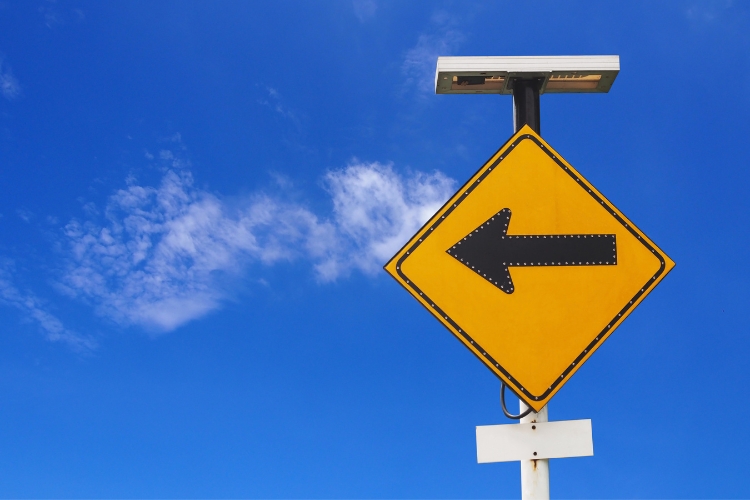In Pakistan’s ever-evolving infrastructure and road safety landscape, choosing between solar-powered and LED traffic signs has become a crucial decision. Both offer unique advantages—but which one performs better under Pakistan’s climate conditions?
This blog article compares energy consumption, installation, cost, visibility, and long-term performance, helping road planners, contractors, and municipal authorities choose the most efficient, cost-effective, and sustainable option based on location and usage.
Key Takeaways!
| Decision Factor | Best Choice | Why It Matters |
|---|---|---|
| Areas with frequent power outages | Solar Signs | Energy independence, reliable during load shedding |
| High-speed urban roads | LED Signs | Brighter visibility, suitable for fast traffic environments |
| Rural or remote locations | Solar Signs | Minimal infrastructure needed, works without grid power |
| Long-term maintenance & cost | Solar Signs | Lower operating costs, sustainable energy |
| Weather resistance | Both (weatherproof) | Choose water/dust-resistant models for durability |
| Environmental impact | Solar Signs | Eco-friendly and supports green development goals |
Understanding the Basics
1. What Are Solar Traffic Signs?
Solar traffic signs are powered by solar panels that convert sunlight into energy. This energy is stored in batteries, allowing the sign to operate day and night without being connected to the electrical grid.
2. What Are LED Traffic Signs?
LED traffic signs are typically connected to a power source and use light-emitting diodes (LEDs) to illuminate the message. These signs require either grid electricity or an external backup power supply like a UPS or generator.

Pakistan’s Climate Conditions: A Deciding Factor
Pakistan experiences extreme weather, which can significantly impact the performance of traffic signs.
| Factor | Pakistan’s Condition | Impact on Traffic Signs |
|---|---|---|
| Sunlight Availability | 8–10 hours/day (avg) | ✅ Ideal for solar power |
| Summer Temperature | 35–45°C (can exceed 50°C) | ⚠️ Can overheat LED hardware |
| Monsoon Season | July–August | ⚠️ Water-resistant designs needed |
| Load Shedding | Frequent in rural/urban zones | ⚠️ Grid-powered LEDs at risk |
| Dust & Pollution | High in urban and roadside areas | ⚠️ Solar panels may need regular cleaning |
Benefits of Solar Traffic Signs
1. Energy Independence
-
Operates without electricity from the grid
-
Ideal for remote or rural areas with poor infrastructure
2. Cost-Efficient in the Long Run
-
Higher upfront cost but zero energy bills
-
Minimal operational cost after installation
3. Environment-Friendly
-
Reduces carbon footprint
-
No fuel-based backup system required
4. Resilience During Power Cuts
-
Perfect for load-shedding-prone areas in Pakistan
-
Batteries store energy for night use

Limitations of Solar Traffic Signs
-
Initial Investment: Costlier than regular LED signs
-
Maintenance: Panels need to be kept clean to ensure performance
-
Battery Degradation: Batteries may need replacement every 3–5 years
-
Weather Dependency: Prolonged cloudy or rainy periods can reduce efficiency
Benefits of LED Traffic Signs
1. High Visibility and Brightness
-
LED technology offers bright, crisp visuals
-
Great for high-speed roads and highways
2. Low Energy Consumption
-
LED signs consume less power compared to older incandescent signs
-
Energy-efficient when combined with a reliable power source
3. Long Lifespan
-
LEDs can last 50,000+ hours with minimal maintenance
-
Ideal for fixed installations with a reliable power connection
Limitations of LED Traffic Signs
-
Dependence on Grid Power: Not ideal for rural areas with unstable power
-
Operational Cost: Monthly electricity bills + backup systems in case of outages
-
Not Eco-Friendly: Consumes grid electricity, increasing carbon footprint
-
Installation Complexity: Requires cabling, infrastructure, and ongoing maintenance

Installation & Maintenance Comparison
| Feature | Solar Signs | LED Signs |
|---|---|---|
| Installation Time | Faster, standalone setup | Slower, requires wiring |
| Power Source | Sunlight + battery backup | Electric grid |
| Maintenance Needs | Panel cleaning, battery check | Electrical inspections |
| Operating Cost | Very low | Moderate to high |
| Infrastructure Dependency | Minimal | High |
| Reliability in Outages | ✅ Always functional | ❌ Fails without backup |
Cost Comparison: Initial vs. Lifetime
1. Initial Cost
-
Solar Traffic Signs: Higher due to panels and battery system
-
LED Traffic Signs: Lower hardware cost but more on wiring and setup
2. Running & Maintenance Cost
-
Solar Signs: Low to negligible
-
LED Signs: Recurring energy bills + backup power
3. Lifetime Value
-
Over 5–10 years, solar signs often prove more economical due to zero electricity cost and lower maintenance.

Use Case Scenarios in Pakistan
1. Urban Highways (e.g., M2, M5)
-
Recommended: LED signs with backup systems
-
Why: High-speed vehicles, clear visibility needed, and availability of power
2. Rural Roads (e.g., Chakwal, Dera Ghazi Khan)
-
Recommended: Solar traffic signs
-
Why: Unreliable power, isolated areas, and minimal infrastructure
3. Mountain Regions (e.g., Gilgit-Baltistan)
-
Recommended: Solar signs with weather protection
-
Why: Inaccessibility, power shortage, and high sunlight levels
Sustainability and Environmental Impact
| Factor | Solar Signs | LED Signs |
|---|---|---|
| Emissions | Zero emissions | Dependent on electricity source |
| Renewable Energy Use | ✅ Yes | ❌ No |
| Lifecycle Waste | Battery disposal (manageable) | LED disposal (lower impact) |
Solar signs contribute to cleaner cities, reduced load on the national grid, and align with green development goals in Pakistan.
Expert Take
From the perspective of a transport planner in Pakistan, here are key insights:
“For cities like Lahore or Karachi, LED signs work well due to infrastructure availability. But in smaller districts or on intercity roads, solar signs are a game changer—lower cost over time and no reliance on grid power.”
“Many accidents in rural areas happen due to unlit or invisible signs. Solar-powered options can reduce such incidents significantly.”

Which One Is Best for Pakistan?
Both solar and LED traffic signs have their place—but the best choice depends on the location, budget, and infrastructure. Here’s a quick guide:
| Condition | Best Option |
|---|---|
| Power outages common | ✅ Solar Signs |
| Urban with grid reliability | ✅ LED Signs |
| Long-term cost savings | ✅ Solar Signs |
| High-speed visibility required | ✅ LED Signs |
| Environmentally sustainable solution | ✅ Solar Signs |
Suggestions for Implementation
-
Audit your road types: Identify whether the area is urban, rural, or semi-urban.
-
Budget smartly: Consider lifecycle costs, not just initial setup.
-
Invest in quality: Choose certified vendors offering weatherproof, durable signs.
-
Educate your team: Train local staff to maintain solar panels and batteries effectively.
Conclusion
Choosing between solar and LED traffic signs is not just a technical decision—it’s a strategic one. For Pakistan’s climate and infrastructure diversity, solar traffic signs provide a sustainable and cost-effective solution, especially where electricity is unreliable. However, LED signs remain essential in urban, high-speed environments.
A thoughtful combination of both—guided by climate, geography, and traffic volume—can significantly improve road safety and infrastructure efficiency across Pakistan.
FAQs
1. Which is more cost-effective: solar or LED traffic signs?
Solar traffic signs have a higher upfront cost but offer long-term savings due to zero electricity bills and low maintenance. LED signs may cost less initially but can become expensive with energy and backup power needs.
2. Are solar traffic signs reliable during cloudy or rainy days?
Yes, modern solar traffic signs come with battery storage that can power the sign for several days even during low sunlight periods, making them reliable in most weather conditions in Pakistan.
3. Where should LED traffic signs be used in Pakistan?
LED traffic signs are ideal for urban highways, motorways, or high-speed city roads where brightness and clear visibility are critical. They work best in areas with stable electricity and infrastructure.
4. Do solar traffic signs require frequent maintenance?
Solar signs require minimal upkeep—mainly periodic cleaning of the solar panel and checking battery health every few years. This makes them suitable for rural or hard-to-access areas.


